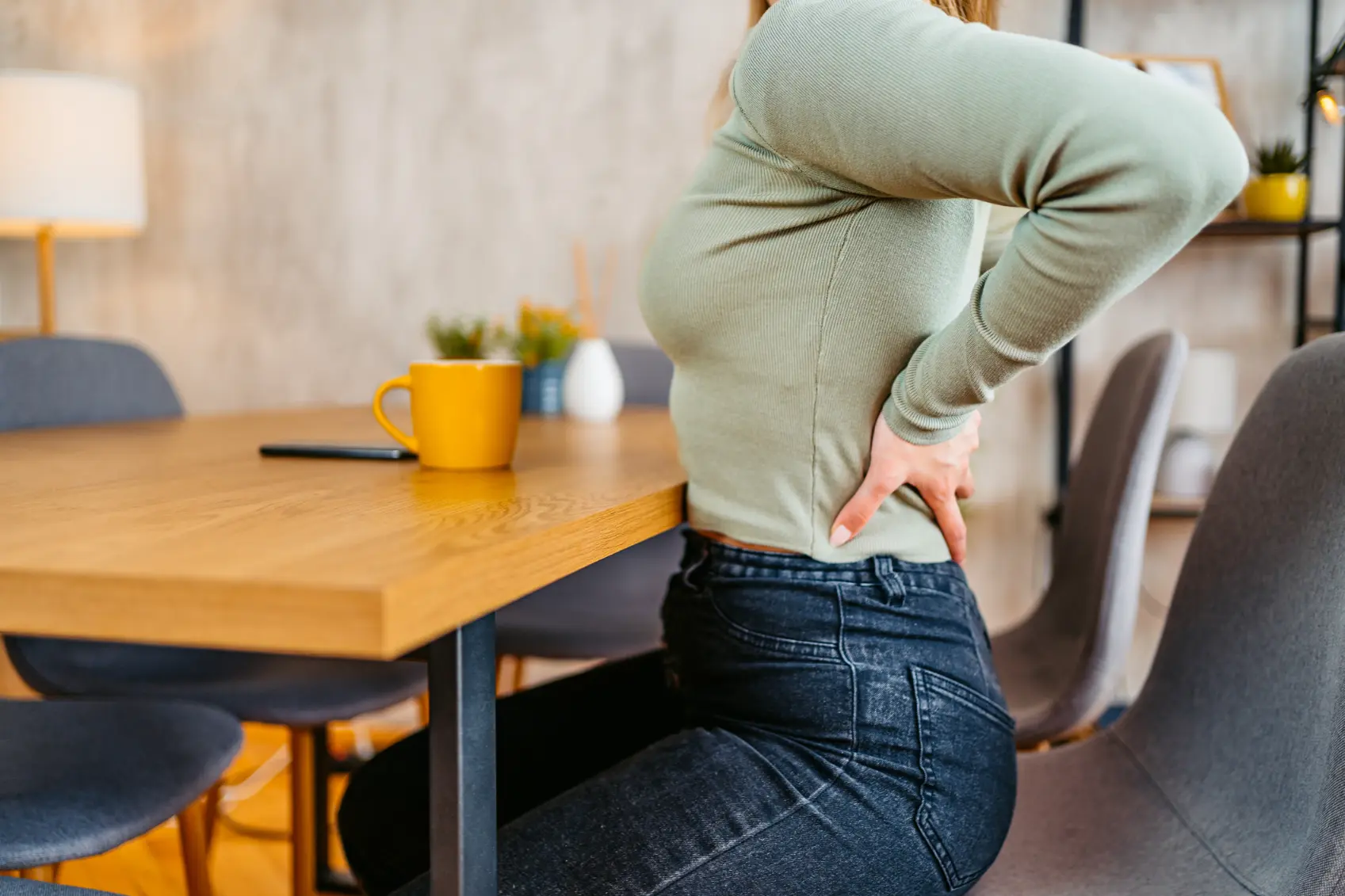
Lower Back Pain
Summary
When the back feels strained or sore below the ribs, it is referred to as lower back pain. Common treatments include physiotherapy, exercise and sports massage. If you have lower back pain, staying active and managing the pain appropriately can help with recovery. Physiotherapists at the White House Clinic's 14 locations across South Yorkshire, North East Derbyshire and Nottinghamshire can provide targeted exercises and treatment plans to support your recovery.
An overview of lower back pain
While it's frustrating, back pain is a common condition. It’s estimated that nearly 10% of the global population is affected, primarily impacting working-age people. The lower back is called the lumbar spine, which is composed of discs, vertebral bones, nerves, muscles, ligaments and blood vessels. Pain here can be caused by problems such as muscle strain, sprains, poor posture, disc prolapse and trapped nerves, or it may be a sign of a more serious condition such as ankylosing spondylitis.
Symptoms of lower back pain
Lower back pain may develop suddenly after lifting something heavy or awkwardly, or it may occur gradually with no apparent reason. Symptoms of lower back pain include:
- Burning pain
- Dull ache
- Pain in the back that spreads down your leg
You can find out more about the anatomy of the lower back in our special guide.
Causes of lower back pain
Lower back pain can have either a specific cause or a non-specific cause.
Specific back pain occurs when there is an apparent cause, such as a disc prolapse, a fracture, or inflammation in your spinal joints.
Non-specific back pain is common. It means there is no particular cause of the pain. It is often a strain of a muscle, tendon or ligament. This can be caused by lifting objects, being obese or inactive, prolonged periods of standing, depression and smoking.
Lumbar spine pain may indicate problems with the bowel and kidneys. However, this is less common.
When to see someone for lower back pain
Lower back pain may subside on its own in a few weeks. However, if the pain doesn't improve, gets worse or stops you from doing your day-to-day activities, you should see a physiotherapist. A physiotherapist at the White House Clinic will observe how you move and take notes on where you feel the pain. From here, they'll give you targeted exercises and advice on how to move, lift and sit to avoid recurring pain.
What to do if you have lower back pain
Lower back pain can hold you back from the activities you love. If you are struggling to cope, consider booking an appointment with a physiotherapist at the White House Clinic.
Evidence strongly suggests that maintaining an active lifestyle and gradually returning to usual activities helps aid recovery. Surgery is rarely an option for back pain, and exercise should always come first.
Back stretches and exercises for back pain can help support tissue healing and improve your strength. Keep in mind that you will need to make gradual progress, rather than sudden returns to previous activities, for long-term results. A physiotherapist will guide you through exercises tailored to your specific needs and demonstrate how to perform them effectively.
Treatment for lower back pain
Treatment for lower back pain includes activity, physiotherapy and sports massage.
Activity and exercise
When you have lower back pain, your instinct might be to rest. However, this can cause you to become stiff and weaken your muscles. Stay active through targeted exercise to keep your spine and muscles strong. Try low-intensity, back-friendly exercise such as walking, swimming and cycling.
Sports massage
Sports massage can help reduce tension in the muscles of the lower back, improving flexibility and supporting the healing process. This treatment is available at multiple White House Clinic locations.
Physiotherapy
Lower back pain can improve after a few weeks of self-help. However, if it doesn't, or if you want to prevent recurrence, you can book an appointment for physiotherapy. A physiotherapist will give you targeted exercises to improve posture, movement, strength and flexibility. They may also provide manual therapy, such as massage and spinal manipulation, if necessary.
Acupuncture
Acupuncture has shown positive results for lower back pain relief. The treatment stimulates endogenous opioids and other neurotransmitters to reduce pain and increase serotonin. Acupuncture is available at selected White House Clinic locations.
Who's affected by lower back pain?
Lower back pain can affect anyone and can be caused by both activity and inactivity. It becomes more common with age and is particularly prevalent in people who are overweight, inactive or who have physically demanding occupations.
Reducing the risk of lower back pain happening again
To prevent lower back pain from impacting your life in the future, build up strength in your back muscles, core and glutes. Pilates, yoga, bespoke back exercises and stretches, and maintaining an active lifestyle will also help keep lower back pain at bay. The White House Clinic offers Pilates classes and Yoga classes to help you build strength and prevent future episodes of back pain.












